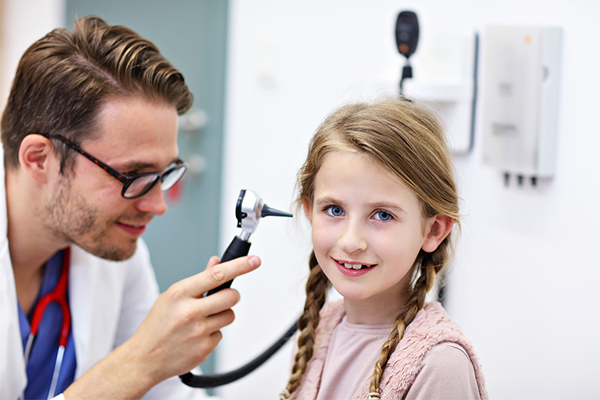Say you’re brushing your teeth, and suddenly you notice the jar of Q-tips on your bathroom counter.
The next moment, you’re poking a Q-tip into your ear canal to see if you can dig out some ear wax.
Resist the urge.
“That’s everyone’s natural tendency,” said Dr. Lisa Leggio, a pediatrician at the Children’s Hospital of Georgia. And that could lead to problems—especially in kids—from blockages to infection.
Why Do We Even Have Ear Wax?
Believe it or not, ear wax is a good thing. “Your ear is self-cleaning, and ear wax plays a big part in that,” said Leggio.
Here’s how it works: The sebaceous and sweat glands in your ear secrete a fatty material into the ear canal. As you move your jaw or chew, that material slowly moves toward the opening of the ear, picking up dirt and other debris along the way. Over time, it becomes ear wax. “If you leave ear wax alone, most of the time, it will work its way out, and you can use a washcloth to wipe it away,” said Leggio.
Kids of any age, including newborns and babies, have ear wax.
Too Much of a Good Thing?
But—and no one knows why—some people make a lot of ear wax. And certain people’s ear wax is harder than others. Still others may have narrower ear canals, making it harder for the ear wax to come out.
Sometimes, the excess ear wax makes the insides of the ears itch. More often, your child might feel embarrassed about the ear wax. Worst-case scenario, your child’s hearing is muffled by too much wax—it’s not common, but this could lead to speech delays in toddlers.
That’s when you should talk to your child’s doctor.
Treating Too Much Ear Wax
Your pediatrician will typically examine your child’s ears during a well visit—and will definitely check them if your child has problems hearing or comes in with a cold, fever or complaining of ear pain, all of which could also involve an ear infection.
Say there’s so much ear wax that your doctor can’t examine your child’s ear drum or your child’s hearing is decreased and the ear canal is definitely blocked. Your doctor may then use a curette, a slim device with a tiny scoop at the end, to clear the wax out of the ear. If it’s packed in or very hard, your doctor may use water, hydrogen peroxide or Colace (also known as stool softener) to soften the wax to make it easier to remove.
Even if you don’t want to have to go to the trouble of making an appointment to see a doctor for something “you can fix yourself,” it really is best for your doctor to check your child’s ears.
“You’ve probably heard, never put anything smaller than your elbow in your ear,” said Leggio. “Q-tips, bobby pins, fingers—all of these carry a risk of packing the ear wax in deeper or even puncturing the ear drum.”
There’s also the risk that you might accidentally scratch the inside of your ear canal, leading to a painful infection.
And even if you’ve watched your pediatrician carefully drip water or hydrogen peroxide into your child’s ear to loosen wax, please don’t try it at home, said Leggio. “Especially for kids with tubes, you don’t want to do that, since the tube creates an opening through the ear drum into the inner ear,” she said.
Final Thoughts…On Ear Wax
“Ear wax—even too much ear wax—isn’t dangerous,” said Leggio. “It’s really better to leave it alone, unless your child has an ear complaint. Then, see your pediatrician.”




